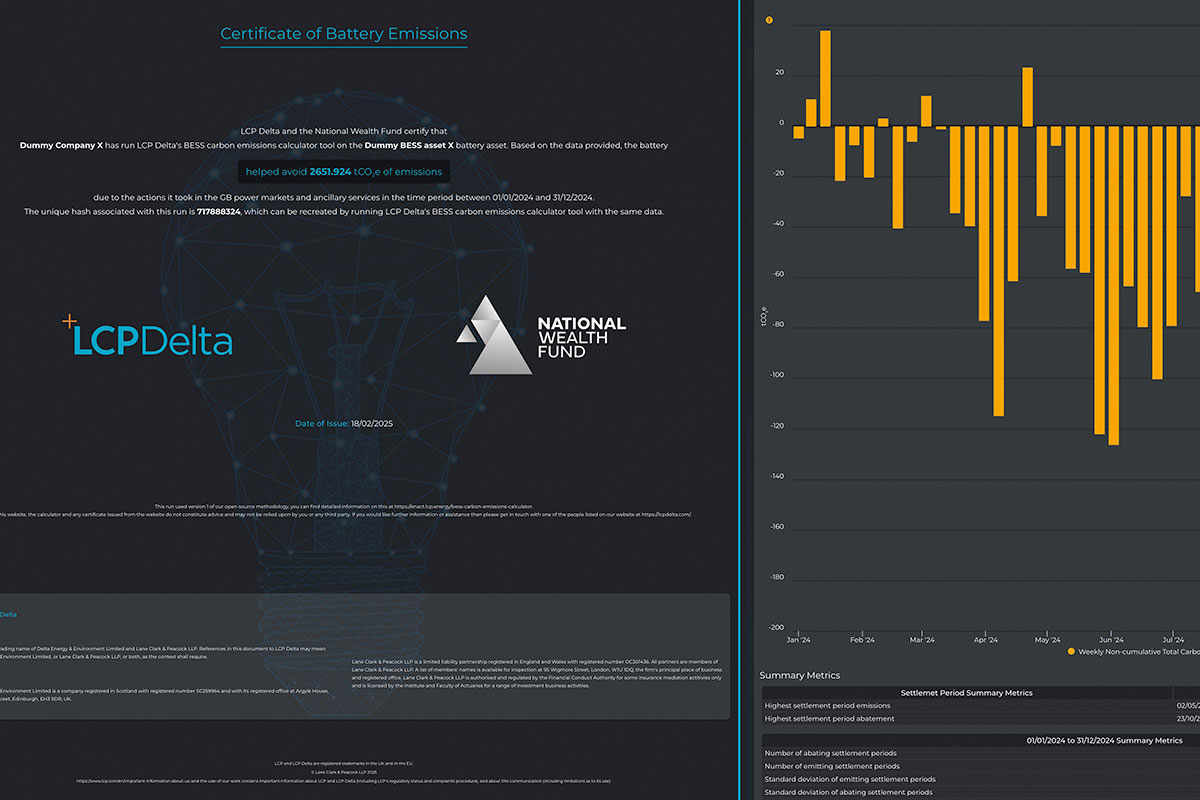Pulse Clean Energy, in partnership with LCP Delta and the National Wealth Fund, has unveiled the UK BESS Carbon Emissions Calculator – billed as the first industry-led, open source tool to accurately track and certify battery storage’s impact on cutting carbon.
The free-to-use calculator aims to standardise how asset owners, investors, and policymakers measure the emissions saved by batteries, which help reduce reliance on fossil fuels by storing excess renewable energy and feeding it back into the grid at peak demand. Until now, operators have often been relying on average emissions figures from National Grid or other broad estimates, leaving sustainability claims without the robust evidence needed to drive further improvements.
With the UK targeting a 68% reduction in emissions by 2030, the new tool taps real-time data from Elexon – the UK’s electricity market operator – to calculate a ‘marginal emissions factor’ for every half-hour interval, offering more precision than the traditional approach.
The firm hopes that by unifying reporting under one common methodology, the UK can more easily track the progress of new infrastructure, which is set to expand markedly as battery storage capacity is expected to exceed 10GW in the coming years.
Aazzum Yassir, Director of Technology & Operations at Pulse Clean Energy, commented “The UK BESS Carbon Emissions Calculator is a real opportunity to drive the industry forward and cement its credibility in the energy transition. There is currently a lack of consistency in how emission reduction figures are calculated, which can reduce our ability to monitor and improve our asset performance, and make sustainability impact claims.
“By encouraging our industry peers to use this tool and standardise their methodology, we can build the support we need from investors and policymakers to keep innovating and delivering on growth. We won’t get to net zero without understanding the true impact of the technologies we’re building to get us there.”
While primarily designed for battery energy storage assets, Pulse Clean Energy also notes that the new tool can also assess the contribution of wind and solar, ideal for colocation projects.

